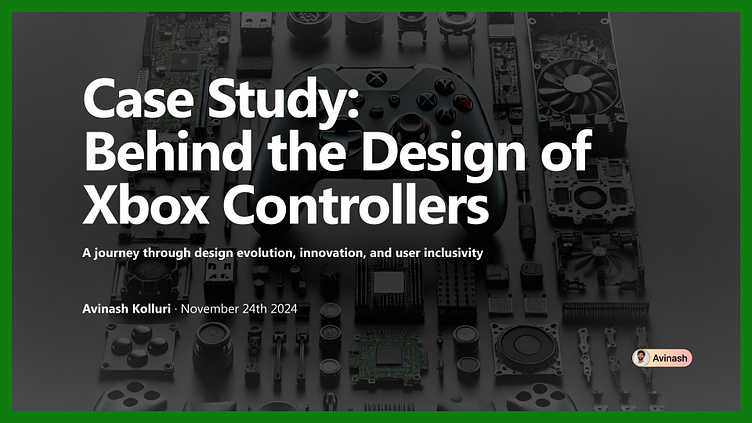Design Of Xbox Controllers
Xbox controllers have come a long way since their inception in 2001. Today, they are not just tools for gaming but benchmarks for innovation, inclusivity, and ergonomic design. This case study highlights their evolution, innovations, and the lessons they offer to designers worldwide.
Let’s start by understanding the journey of Xbox controllers. From the bulky Duke to the sleek Series X|S controller, Microsoft’s dedication to refining player experience is evident. Their evolution reflects their commitment to design excellence.
The journey of Xbox controllers spans over two decades, with each version introducing groundbreaking features. Let’s take a closer look at the key milestones that define their legacy.
Innovation is at the heart of Xbox controllers. Their design is a blend of advanced technology, user-centric features, and inclusivity. Here are five pillars of their success.
Accessibility has been a key focus for Xbox. Their Adaptive Controller is a game-changer, enabling gamers with disabilities to enjoy the same immersive experiences as everyone else. Let’s explore how they achieved this.
A key reason for Xbox’s success is their commitment to understanding their users. Through iterative prototyping and feedback, they’ve consistently delivered controllers that meet player needs.
Xbox controllers are not just industry leaders—they’re trendsetters. From record-breaking sales to influencing competitors, their impact on the gaming world is undeniable.
Xbox controllers offer valuable lessons for designers everywhere. From prioritizing inclusivity to listening to users, their journey is a masterclass in innovation and adaptation.
To wrap up, Xbox controllers are more than gaming peripherals. They are a testament to how thoughtful design and inclusivity can redefine industries and create lasting impact. The future is bright for Xbox, and their journey is one we can all learn from.











